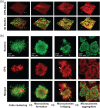The exopolysaccharide matrix: a virulence determinant of cariogenic biofilm
- PMID: 24045647
- PMCID: PMC3834652
- DOI: 10.1177/0022034513504218
The exopolysaccharide matrix: a virulence determinant of cariogenic biofilm
Abstract
Many infectious diseases in humans are caused or exacerbated by biofilms. Dental caries is a prime example of a biofilm-dependent disease, resulting from interactions of microorganisms, host factors, and diet (sugars), which modulate the dynamic formation of biofilms on tooth surfaces. All biofilms have a microbial-derived extracellular matrix as an essential constituent. The exopolysaccharides formed through interactions between sucrose- (and starch-) and Streptococcus mutans-derived exoenzymes present in the pellicle and on microbial surfaces (including non-mutans) provide binding sites for cariogenic and other organisms. The polymers formed in situ enmesh the microorganisms while forming a matrix facilitating the assembly of three-dimensional (3D) multicellular structures that encompass a series of microenvironments and are firmly attached to teeth. The metabolic activity of microbes embedded in this exopolysaccharide-rich and diffusion-limiting matrix leads to acidification of the milieu and, eventually, acid-dissolution of enamel. Here, we discuss recent advances concerning spatio-temporal development of the exopolysaccharide matrix and its essential role in the pathogenesis of dental caries. We focus on how the matrix serves as a 3D scaffold for biofilm assembly while creating spatial heterogeneities and low-pH microenvironments/niches. Further understanding on how the matrix modulates microbial activity and virulence expression could lead to new approaches to control cariogenic biofilms.
Keywords: Streptococcus mutans; dental caries; extracellular matrix; glucosyltransferases; heterogeneity; pH microenvironment.
Conflict of interest statement
The authors declare no conflicts of interest with respect to the authorship and/or publication of this article.
Figures




References
Publication types
MeSH terms
Substances
Grants and funding
LinkOut - more resources
Full Text Sources
Other Literature Sources
Medical

